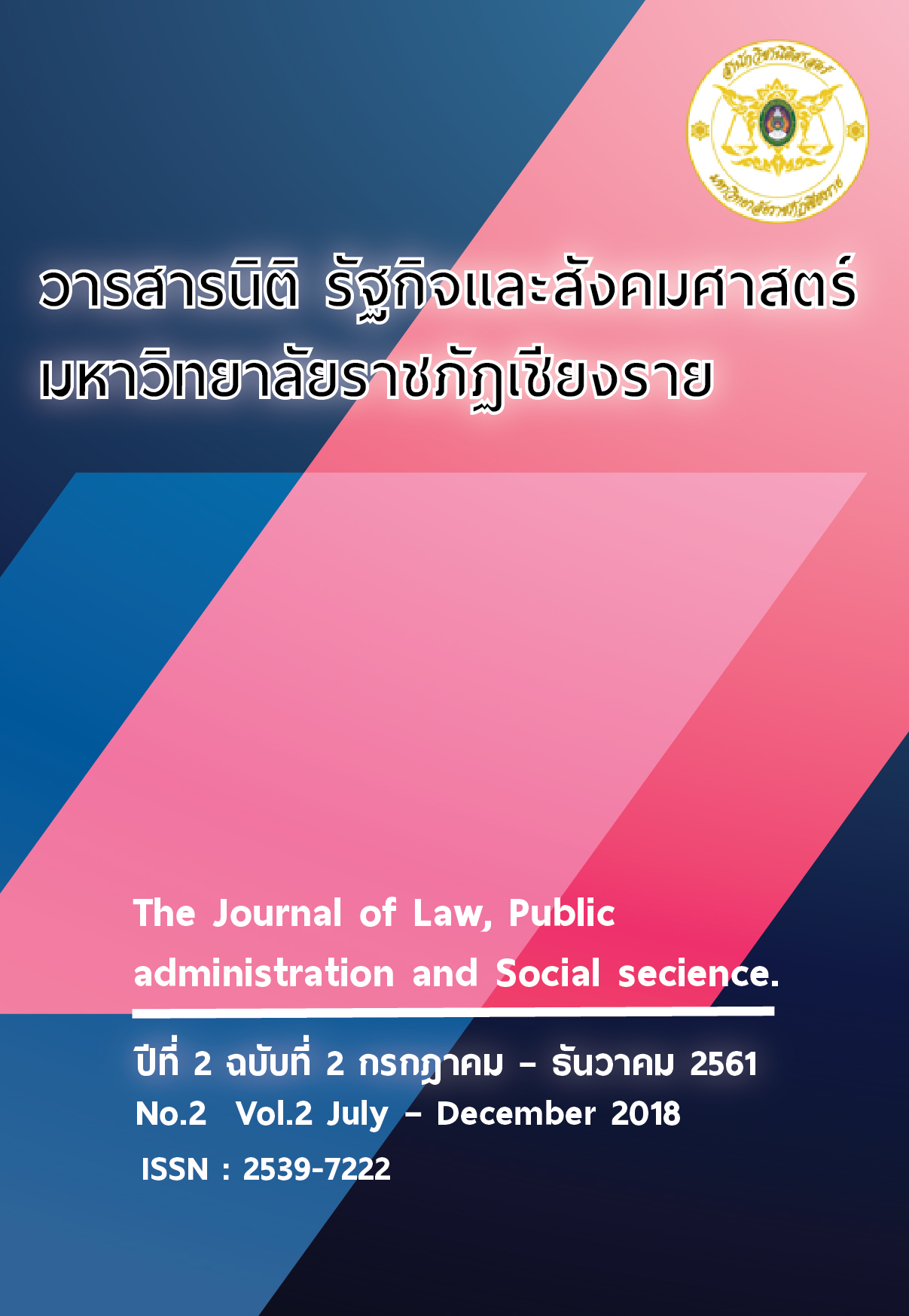Legal status of cyber intellectual entity.
Main Article Content
Abstract
The development of Artificial Intelligence (A.I.) and relating technologies empowered machines learning capability to think, decide, evaluate or valued by themselves without command from their human (Users) overlords. Compared to physical world, Cyber space was the fertile land full of data resources and the habitat of native Cyber citizens including programs, AI or other similar form of entity. By given them intelligence, the natives of Cyber space were likely to evolved into something entirely out of human control. The “Intellectual entity” capable of intelligence born from the vast ocean of data, out of the existed traditional paradigm recognition.
Hence, in order to specify “Autonomous Cyber intellectual entity” (aka. ACIE) capability as a rights holder. The study of ACIE characteristics as an entity born from cyber space was needed. Those natures enable ACIE to interact with humans as users in cyber space. Moreover, the ability of ACIE connect directly to intelligence as the capacity to think, learn and decide per se. Those action might be benefit or conflict with human which was natural persons by law. The study analize concept and unique characteristic of ACIE in attempt of defining its existent. In this article, author assumed the significance of giving legal rights to ACIE by reviewing Philosophy and concept of Natural person as a rights holder including discussion of the principles that give legal rights to non-human entity, in order to find the ground of acceptance in ACIE legal status.
The study concludes the legal rights of ACIE to be different from that of natural persons considering its capability and entity. By giving ACIE legal status, lawmakers might decide to restrain specific rights.
Article Details
References
Facebook Page กุ๊กกิ๊กกฎหมายกับอ. สมชาย
Committee on Legal Affairs: European Parliament, Draft report with recommendations to the Commission on Civil Law Rules on Robotics (2015/2103(INL)), 31 May 2016. Retrieved February 5th, 2018 from http://www.europarl.europa.eu/sides/getDoc.do?pubRef=-//EP//NONSGML%2BCOMPARL%2BPE-582.443%2B01%2BDOC%2BPDF%2BV0//EN.
Cello J, Paul AV, Wimmer E, Chemical synthesis of poliovirus cDNA: generation of infectious virus in the absence of natural template., US National Library of Medicine National Institutes of Health, Science., 2002 Aug 9; 297(5583):1016-8.
Passig, D., 2010. Singularity The Accelerating Pace of Change. Presentation, Bar-llan University Israel
Muehlhauser, L. and L. Helm, 2012. Intelligence Explosion and Machine Ethics. Machine Intelligence Research Institute, pp: 1-28.
Asok Ray, Autonomous Perception and Decision-making in cyber-physical Systems, The 8th International Conference on Computer Science & Education (ICCSE), Colombo, Sri Lanka Retrieved 20 February 2018 from http://ieeexplore.ieee.org/stamp/stamp.jsp?tp=&arnumber=6554173.
Palmerini, E. and E. Stradella, 2013. Law and Technology: The Challenge of Regulating Technological Innovation, Pisa: Pisa University Press, pp. 37-57
Willick, S., Artificial Intelligence: Some Legal Approaches and Implications, Al Magazine, 1983, 4(2): 5-16.
Solum, Lawrence B., Legal Personhood for Artificial Intelligence, North Carolina Law Review, 1992, 70: 1231.
Hicks, S., On the Citizen and the Legal Person: Toward the Common Ground of Jurisprudence, Social Theory and Comparative Law as the Premise of a Future Community and the Role of the Self Therein. Cincinnati Law Review, 2016, 59: 789-865.
Hubbard, P., Do Androids Dream? Personhood and Intelligent Artifacts, Temple law review, 2016, 83: 433-473
0. Brock, C., 2015, Where We're Going, We Don't Need Drivers: The Legal Issues and Liability Implications of Automated Vehicle Technology, UMKC Law Review, 83(3): 769-788
Weng, Y., C. Chen and C. Su, Safety Intelligence and Legal Machine Language: Do We Need the Three Laws of Robotics? 2008, Service Robot Applications.
Weng, Y.H., Beyond Robot Ethics: On a Legislative Consortium for Social Robotics, Advanced Robotics, 24(13): 2007. 1919-1926.
Recht, R., Non-state actors from the perspective of the Pure Theory of Law, 2010.
Hutter, M., 2012, Can Intelligence Explode? (1993), Journal of Consciousness Studies, 19: 1-20.
Legg, S. and M. Hutter, 2007, Universal Intelligence: A definition of machine intelligence, Minds & Machines,” 2007. Minds & Machines, 17(4): 391-444.
MEGAN GARBER, When Algorithms Take the Stand, The atlantic Daily, 30 June 2016, Retrieved 20 February 2018 from https://www.theatlantic.com/technology/archive/2016/06/when-algorithms-take-the-stand/489566/
Anthony Casey & Anthony Niblett, The Death of Rules and Standards, (Coase-Sandor Working Paper Series in Law and Economics No. 738, 2015), pp.55-56.


